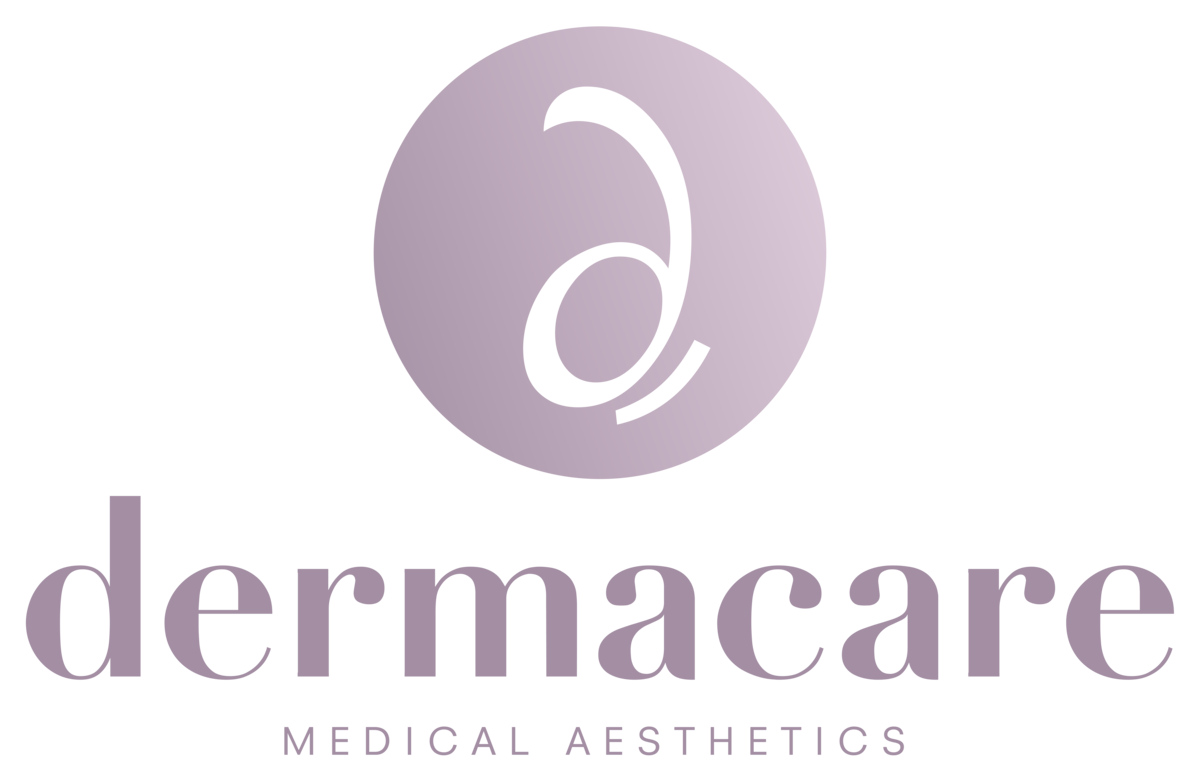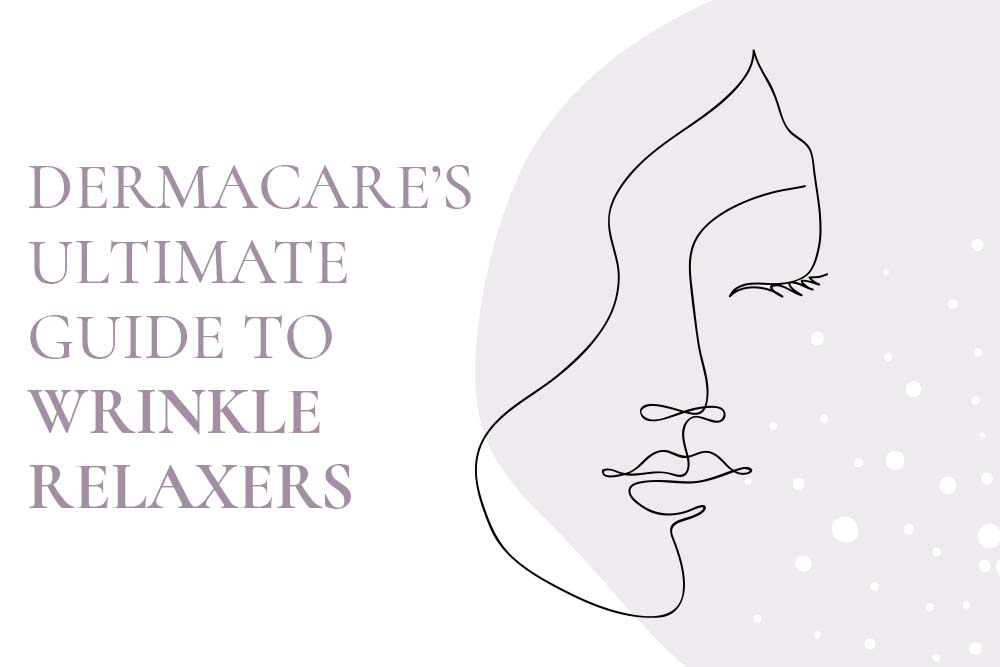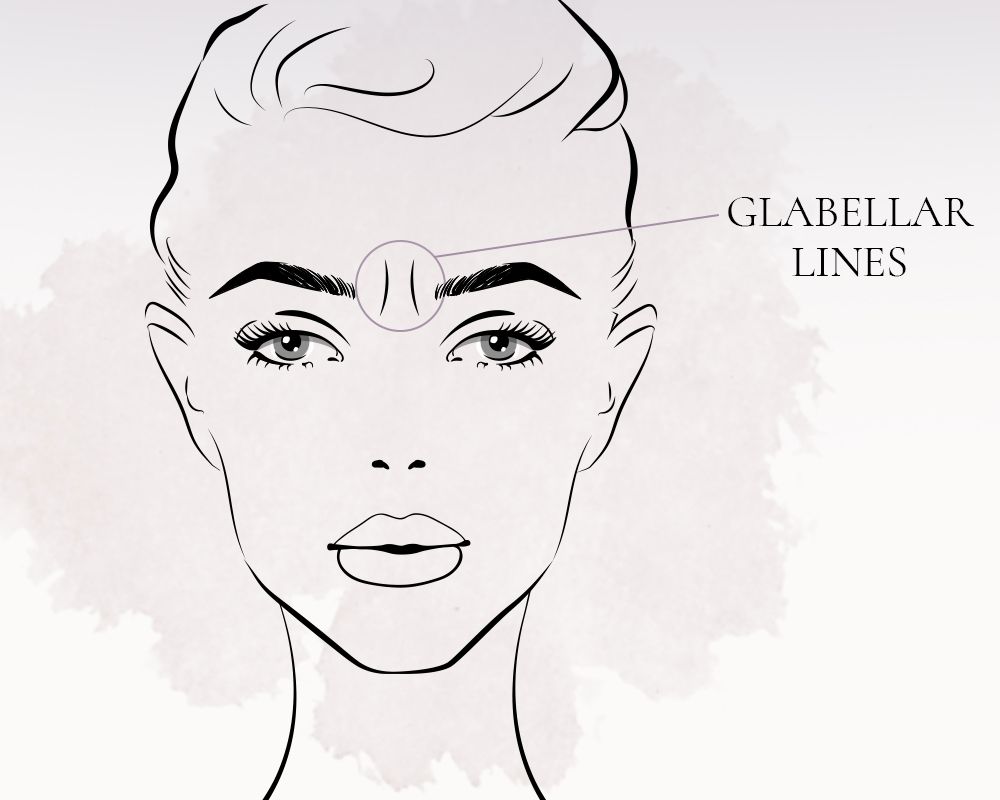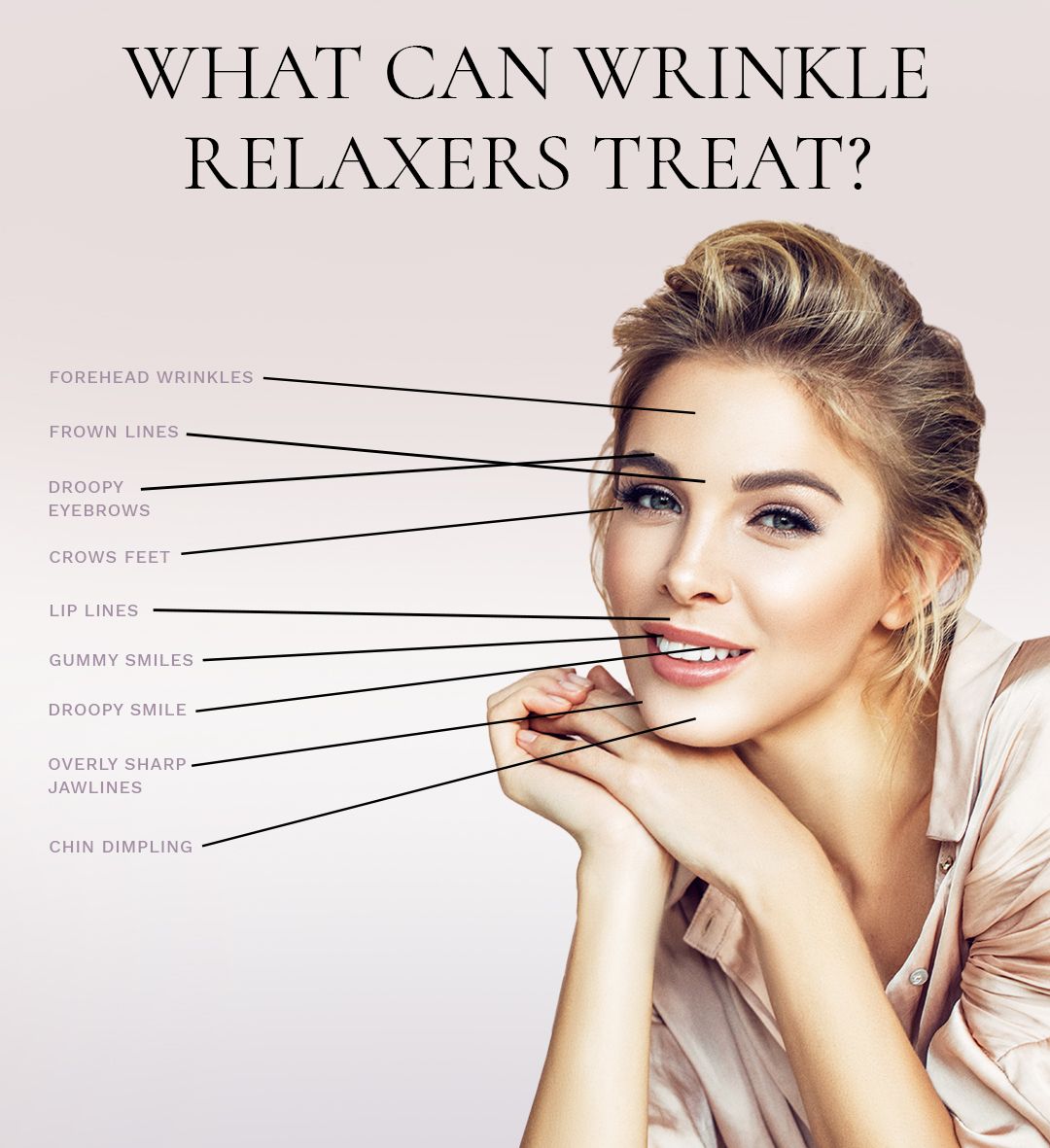Part One: Introduction
In 2019, more than 5 million wrinkle relaxer injections were performed, making it the single most performed cosmetic procedure of the year.[1] This number includes injections from a variety of neuromodulator brands like Botox, Dysport, Xeomin and Jeuveau. Despite a worldwide pandemic that shut down countless industries, wrinkle relaxers held firm in the United States during 2020, amassing more than 4.4 million individual injections.
To illustrate the immense popularity of this category of treatments, consider that the second most performed cosmetic procedure was injectable fillers, which reached 3.4 million in 2020 and 3.8 million in 2019.[1] The top three plastic surgeries were nose jobs, eyelid surgeries and facelifts, which were performed about 352,000, 325,000 and 234,000 times, respectively.[1]
It is hard to overstate the impact of wrinkle relaxers such as Botox on the aesthetic medicine industry and pop culture. The idea of having one of these procedures performed has become widely accepted, and the once-notorious reputation wrinkle relaxers had for freezing faces is steadily falling out of the public’s opinion as more effective and conservative techniques are adopted.
For anyone who cares even a little about their appearance, wrinkle relaxers are a ubiquitous, versatile treatment that can erase fine lines, wrinkles and folds throughout the face. As the aesthetic preferences of the general population have continually shifted through generations, wrinkle relaxers have only become increasingly more commonplace.
A Brief History of Wrinkle Relaxers
There are few products on the market with a name as recognizable as Botox, but unless you were a food scientist in the late 19th
century or a weapons manufacturer during World War II, you had probably not heard of the substance used in the injections until the late 1900s.
This is because wrinkle relaxers are made from the same toxin found in botulism, a disease that rampaged between 1895 and 1925 and continues to affect people today.[2, 3] During World War II, the same toxin was investigated as a potential biochemical weapon.[4] The average person had no reason to know anything about the substance … until modern scientists learned how to safely use it to reverse signs of aging.
As early as 1977, this toxin was being used in clinical settings to treat conditions like strabismus5], but it was not until 1989 that Allergan received FDA approval for Botox’s clinical use.[6]
Around the same time, a plastic surgeon from Sacramento named Richard Clark discovered its cosmetic use in patients with forehead asymmetry caused by nerve paralysis.[7] Thirteen years later, Botox Cosmetic, the formula still used for anti-aging injections, was FDA approved to treat moderate to severe glabellar lines.[8]
Why Do We Need Wrinkle Relaxers?
There are two major causes of fine lines and wrinkles throughout the face: volume loss and muscle movement. As we go through our everyday routines, we are regularly put in situations where we rely on our faces to communicate our feelings to those around us. If you are listening to a story from a friend or colleague, your face is constantly moving to let them know you are engaged.
When you hear a shocking plot twist, your eyes move upward, causing the skin on your forehead to fold into itself. If you are listening to something you disagree with, you push your eyebrows together, wrinkling the skin between your eyebrows. These expressions are happening every time you have an interaction with someone — they can even occur when you are by yourself watching your favorite show, reading a book or laughing at something you saw online.
Eventually, all that movement takes a toll on your skin. It creates permanent creases on your skin the same way you would expect clothing to wrinkle if you don’t immediately hang it up. Wrinkle relaxers aim to correct these concerns by preventing the muscle from contracting entirely through a non-destructive approach.
How Do Wrinkle Relaxers Work?
We know that wrinkle relaxers are derived from a toxin. The full name of that toxin, however, is botulinum toxin type A. When small amounts of this substance are injected into specific parts of facial muscles, they can block the communication between the muscle and the rest of the nervous system.
If the brain cannot communicate with the muscle, then there is no way for expressions or other facial movements to fold the skin. This has two effects that improve the appearance of your skin. The first effect is instant — broken communication means no lines in the skin during day-to-day activities as long as the toxin remains active.
The second is a long-term benefit. While the face has time away from its regular expressions, the skin that used to go through frequent folding now has a chance to reset. In other words, the longer you use wrinkle relaxers, the more your signs of aging are actually reversed.
This is why the vast majority of medical professionals in the field will always recommend regular treatment appointments — to ensure that no progress is lost and that the optimal results are maintained.
Why Are Wrinkle Relaxers So Popular?
The counts are in the millions. So what makes them the most dominant cosmetic treatment on the market? Three things, in particular: there is no hassle, they are relatively inexpensive and, arguably the most important, they work.
They Are Convenient
Injectables are easy, minimally invasive procedures that can typically be performed within a lunch break. Wrinkle relaxers specifically are exceedingly convenient because they provide instant results that avoid looking overly worked. You can get back to work, continue taking care of your family or jump back into that adventurous lifestyle without missing a beat.
They Are Affordable
Wrinkles are tough to treat, especially when they are moderate to severe. There are few options on the market, and most of those include surgery and anesthesia, which can cost patients thousands. Wrinkle relaxers require a much lighter financial and time investment.
They Are Effective
Their popularity isn’t a fluke; muscle relaxers consistently remain at the top of cosmetic procedure lists because patients continue to return for treatments. They are more consistent than injectable fillers and more impactful than topical procedures, and they provide drastic improvements that patients come to trust.
Part Two: Botox vs. Other Wrinkle Relaxers
Botox is the most popular wrinkle relaxer on the market, but it isn’t the only option. Three others are also popular among consumers: Dysport, Xeomin and Jeuveau. So what is the difference between these four options, and which one should you consider?
Botox
Officially, the product used for wrinkles and folds is called Botox Cosmetic, but this is commonly abbreviated to just Botox by medical professionals and patients alike. It is a versatile option with a well-documented track record of success. As the oldest botulinum toxin type A product, providers are likely to have the most experience with this injectable, making high-quality results easier to attain.[10]
Dysport
Dysport is strikingly similar to Botox in its composition, with only one significant difference: while Botox is approved to treat both glabellar lines, crow’s feet and forehead lines, Dysport is only approved for glabellar lines. This makes it more niche than Botox, and therefore less common. In some cases, Dysport will be used when patients are not having effective reactions to Botox but would like to continue to have neuromodulator treatments.[11]
Xeomin
Xeomin strips away any additives that Botox or Dysport have in their formulas, instead opting for a pure botulinum toxin type A injection. The practical benefit is that no additional proteins are added, which means the human body is less likely to become resistant to its effects. This is good news for people who are hoping to have wrinkle relaxer treatment for long periods.[12]
Jeuveau
When Jeuvaeu launched as a new neuromodulator in 2019, it used the tag “newtox” to signal that it was looking to compete with Botox as the most effective wrinkle relaxer on the market. While Botox has both cosmetic and medical applications, Jeuveau is only approved by the FDA for cosmetic use.[13]
Part Three: What Can Wrinkle Relaxers Treat?
Wrinkle relaxers can be used to treat a variety of concerns. Most of these are related to facial wrinkles, but there are some other uses that products like Botox can provide. Here is a list of all the potential conditions they can address:
Forehead Wrinkles
These are the lines that develop between your hairline and eyebrows. Often referred to as glabellar lines, they are a common area of concern since any eyebrow movement will disrupt the skin on the forehead and cause creasing. You might not even notice their development in many cases since they often are only visible when you are talking or reacting.
Treatments: Botox, Xeomin, Jeuveau
Crow’s Feet
These lines develop on the outside of your eyes. When we smile, the skin beneath our eyes collides with the skin in our cheeks, causing tissue folding. Eventually, those folds will stick and be present even when we aren’t expressing emotion. Crow’s feet are one of the most prevalent signs of aging since the eyes are a common focal point.
Treatments: Botox, Xeomin, Jeuveau
Lip Lines
These tiny lines above and below your lips are often referred to as smoker’s or lipstick lines since they become much more noticeable when lips are pursed together. By stopping targeted muscles in the area, the squeezing movement can be controlled, preventing the development of worse wrinkles and giving the lips time to smooth themselves out.
Treatments: Botox
Frown Lines
These are the vertical lines that develop between your eyebrows and above the nose. Nearly every expression we make has some effect on this particular area, making it a common place for people to experience tissue laxity. Small doses of wrinkle relaxers can go a long way in reducing their impact on your face.
Treatments: Botox, Dysport, Xeomin
Droopy Eyebrows
As muscle integrity begins to decline, many people experience a lowering of their eyebrows on their faces. The drooping brows are an iconic feature to indicate age, but by paralyzing the muscles responsible for pulling the eyebrows down and leaving the other muscles intact, a lifting effect can be achieved through wrinkle relaxer injections.
Treatments: Botox, Dysport
Droopy Smile
There is a lengthy complex of muscles running through the face that makes all of our expressions possible. In some cases, these muscles develop unevenly as a genetic feature. The result is a droopy or uneven smile that many patients would prefer to correct. By targeting pinpoint locations, the shape of the smile can be made symmetrical.
Treatments: Botox, Dysport, Xeomin
Overly Sharp Jawlines
Wrinkle relaxers excel at solving problems caused by muscles in the face. While a sharp jawline may be an attractive feature for someone looking for a more masculine appearance, someone looking for a softer, more feminine aesthetic may wish to soften a harsh jawline. Neuromodulators can be used to weaken those muscles, causing the tension on the jawline to loosen.
Treatments: Botox, Dysport, Xeomin
Chin Dimpling
Not many people think chin dimpling is a common aesthetic concern, but it is a natural part of the aging process that can add years to your appearance. It’s also tricky to treat in terms of facial anatomy, but one of the most effective ways to stop dimpling from occurring is to prevent the muscles from contracting. The area where dimpling occurs isn’t used to express emotion, so it is also a pretty safe place to achieve natural results.
Treatments: Botox, Dysport, Xeomin
Gummy Smiles
A perfect smile can drastically improve your overall appearance. Unfortunately, this also means an imperfect smile can have the opposite effect. As little as three millimeters of gum tissue being exposed in a smile is considered to be overly gummy.[14] Luckily, the muscles around the mouth can be partially weakened to lower how much gum shows during a smile.
Treatments: Botox, Dysport, Xeomin
Are Wrinkle Relaxers Safe?
Despite their relationship to a deadly disease and possible bioweapon, modern medicine has perfected the usage of the toxin. This discovery has allowed the toxin to be safely injected into the body — much to the benefit of people today craving creative ways of stopping the aging process.
Today, wrinkle relaxers are a common household name and are considered extremely safe procedures when handled by medical professionals. In the early years of Botox, between 1989 and 2003, only 36 cases of adverse effects were associated with cosmetic use. Thirteen of those cases were likely due to underlying causes and not Botox itself.[9]
Perhaps one of the most significant benefits of Botox is that it is a minimally invasive procedure performed via injection. This prevents the patient who is looking to improve their appearance from opening themselves up to the additional surgical risks associated with alternatives like eyelid and brow lifts.
Will Wrinkle Relaxers Freeze My Face?
For a while, wrinkle relaxers had a reputation for making someone look frozen and unable to express emotion. This was partly a product of the aesthetic preference at the time and partly how the next generation of neuromodulator users preferred to improve their appearance.
Subtle, soft improvements overtook excessive, overly done faces. “Barely-there Botox” is slowly taking over the extreme aesthetic that was once the focus of many jokes.[15] Smaller amounts, often referred to as baby Botox or preventative Botox by Millennial and Gen Z consumers, are the new norm. But it isn’t just the younger generations that are looking to change their wrinkle relaxer habits.
In 2020, 57% of the total wrinkle relaxer injections in the United States were performed on patients between 40 and 54. People between 30 and 39 accounted for 18% of the total market, while people between 20 and 29 made up only 1%.[1] Younger generations are pioneering the new neurotoxin aesthetic, but older generations are happy to follow suit as providers across the country continue to adopt natural appearances as the golden standard.
When Should I Start Having Wrinkle Relaxers?
There is no one-size-fits-all recommendation for when to begin treatment. You should have wrinkle relaxers performed whenever you want to improve the appearance of your face by reducing wrinkles in your skin. The success of this treatment is based on your anatomy alone, not your chronological age.
While most patients today are still waiting until symptoms develop to have injections performed, there is a lot of benefit to being proactive about your cosmetic health.
Botox Cosmetic is approved for patients who are 18 or older, but most aesthetic professionals will tell you this is too early to begin treatment.[16] This is because the majority of your tissue structure is still intact, and your skin won’t typically begin to degrade until after the age of 20.[17] For most patients, the mid-to-late twenties are an excellent time to start getting the ball rolling on preventative injections because your skin will begin to hold the folds from your daily expressions.
Part Four: How Long Do Wrinkle Relaxers Last?
The simple rule of thumb is that you can expect wrinkle relaxers to last anywhere between three and six months per treatment. But this figure is entirely dependent on your body’s reaction to the toxin and how quickly it works to get rid of it. You may also find that while Botox only lasts three months, another relaxer like Dysport might give you much longer results.
Developing an Effective Treatment Plan
The only way to reliably increase the amount of time you get from your wrinkle relaxers is to stick to a regular treatment plan. Once you have had a procedure done, your medical professional can review the results and determine the best path to move forward. As you continue to have injections performed, the targeted muscle will continue to become weaker.
This means the frequency of which you need wrinkle relaxer treatment will decrease, saving you time, money and a lot of hassle in the long run.
Part Five: How Much Do Wrinkle Relaxers Cost?
There are many different practitioners with different skill levels who practice in different geographic locations throughout the world. There are also multiple botulinum toxin type A treatments available on the market. This makes it exceedingly difficult to provide a broad, accurate cost estimate for wrinkle relaxer procedures.
But based on general trends, we can estimate that the average cost of wrinkle relaxers is between $400 and $600 per treatment.
Never Go with Budget Practices
A big part of the cost associated with your wrinkle relaxer is the experience and expertise of your providers. While many offices claim to provide top-level results for a fraction of the standard rate, many patients find out the hard way that saving a few dollars wasn’t worth the trouble.
Wrinkle relaxers are made from toxins, and it is crucial to find a partner through the process that is highly experienced and educated in handling the products. There are many cosmetic and health risks that could manifest when done by someone without the proper training.
Dermacare Laser and Skin Clinics
Dermacare is a worldwide leader in the laser and cosmetic skin treatment industries. We are located in both the San Diego and Carlsbad areas, and our team is led by Dr. Birchall, one of the top providers of neurotoxin injectables.
We achieved Black Diamond provider status for Botox Cosmetic and were recognized as one of the Top 100 out of more than 30,000 providers in the country. Our entire staff is committed to providing you with the best possible experience and results possible during your aesthetic journey.
If you are interested in saving a bit of money on a wrinkle relaxer (or any cosmetic treatment), you can subscribe to our newsletter, where you will find monthly discounts, specials, tips, events and even prizes. It is the best way to make sure you are on top of all the opportunities we offer at Dermacare.
If you aren’t a member of Allé, a rewards program and resource for cosmetic treatments, we highly recommend joining. We are partnered with the program to bring our clients even more savings as they look to have injectable fillers and other procedures performed.
Works Cited
- 2020 Plastic Surgery Statistics Report. American Society of Plastic Surgeons, www.plasticsurgery.org/documents/News/Statistics/2020/plastic-surgery-statistics-full-report-2020.pdf.
- Zeide, Anna. “The Botulism Outbreak That Gave Rise to America’s Food Safety System.” Smithsonian.com, Smithsonian Institution, 3 Aug. 2018, www.smithsonianmag.com/history/botulism-outbreak-gave-rise-americas-food-safety-system-180969868/.
- “National Botulism Surveillance.” Centers for Disease Control and Prevention, Centers for Disease Control and Prevention, 1 June 2021, www.cdc.gov/botulism/surveillance.html.
- Lamanna, Carl, et al. “The Purification and Crystallization of Clostridium Botulinum Type A Toxin.” Science, American Association for the Advancement of Science, 17 May 1946, science.sciencemag.org/content/103/2681/613.
- Scott, Alan B. “Botulinum Toxin Injection into Extraocular Muscles as an Alternative to Strabismus Surgery.” Aaojournal.org, American Academy of Ophthalmology, 9 Nov. 1979, www.aaojournal.org/article/S0161-6420(80)35127-0/pdf.
- Woodcock, Janet. “FDA Response to Citizen Petition on Botulinum.” Internet Archive, Department of Health and Human Services, 30 Apr. 2009, web.archive.org/web/20100706104512/www.fda.gov/downloads/Drugs/DrugSafety/PostmarketDrugSafetyInformationforPatientsandProviders/DrugSafetyInformationforHeathcareProfessionals/UCM143989.pdf.
- Vancouver. “Botulinum Treatment of Forehead Wrinkles: Plastic and Reconstructive Surgery.” LWW, Journal of the American Society of Plastic Surgeons, 1 Apr. 2006, journals.lww.com/plasreconsurg/Citation/2006/04010/Botulinum_Treatment_of_Forehead_Wrinkles.54.aspx.
- Center for Drug Evaluation and Research. Botulinum Toxin Type A Product Approval Information – Licensing Action 4/12/02, Center for Drug Evaluation and Research, 29 Oct. 2009, web.archive.org/web/20100308063343/www.fda.gov/Drugs/DevelopmentApprovalProcess/HowDrugsareDevelopedandApproved/ApprovalApplications/TherapeuticBiologicApplications/ucm080509.htm.
- Coté, Timothy R, et al. “Botulinum Toxin Type A Injections: Adverse Events Reported to the US Food and Drug Administration in Therapeutic and Cosmetic Cases.” Journal of the American Academy of Dermatology, U.S. National Library of Medicine, 23 Sept. 2005, pubmed.ncbi.nlm.nih.gov/16112345/.
- “About Botox Cosmetic.” Botox Injections, Botox Cosmetic, www.botoxcosmetic.com/what-is-botox-cosmetic/about-botox-cosmetic-treatment.
- “Don’t Let Wrinkles Stop You.” Dysport USA Website, Dysport, www.dysportusa.com/before-and-after.
- “How Does Xeomin Work for Frown Lines?” Xeomin Aesthetic, 24 Sept. 2020, www.xeominaesthetic.com/how-it-works/.
- “How It Works.” Jeuveau, jeuveau.evolus.com/how-it-works/.
- Zawawi, Khalid H, et al. “Effect of Lip Position and Gingival Display on Smile and Esthetics as Perceived by College Students with Different Educational Backgrounds.” Clinical, Cosmetic and Investigational Dentistry, Dove Medical Press, 31 Oct. 2013, www.ncbi.nlm.nih.gov/pmc/articles/PMC3816985/.
- Schiffer, Jessica. “How Barely-There Botox Became the Norm.” The New York Times, The New York Times, 8 Apr. 2021, www.nytimes.com/2021/04/08/style/self-care-how-barely-there-botox-became-the-norm.html.
- Botox Label. Federal Food and Drug Administration, www.accessdata.fda.gov/drugsatfda_docs/label/2011/103000s5232lbl.pdf.
- “Why Does Skin Wrinkle with Age? What Is the Best Way to Slow or Prevent This Process?” Scientific American, Scientific American, 26 Sept. 2005, www.scientificamerican.com/article/why-does-skin-wrinkle-wit/.




